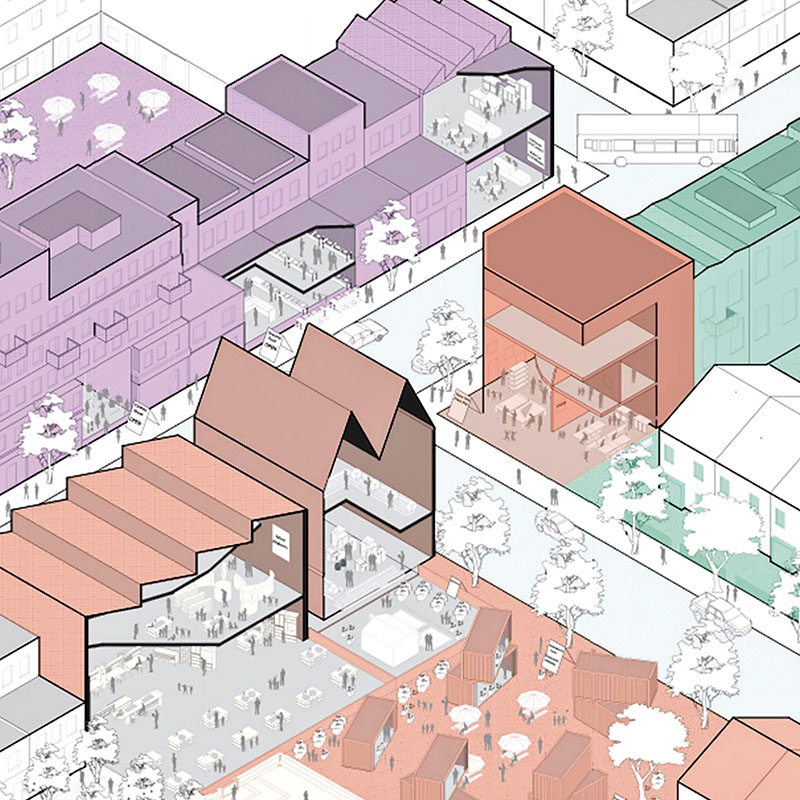Cities and a Circular Economy After the Virus
September 24, 2020
REGENERATIVE, ACCESSIBLE AND ABUNDANT BY DESIGN
Film mogul Sam Goldwyn once said, “I never make predictions, especially about the future,” and in the current multifaceted, multilevel disruption, this is extremely wise advice. Yet, it becomes almost unforgivable or a dereliction of a very human duty not to tease around some of the evidence in search for clues as to the changes ahead.
To do this like Buckminster Fuller, the futurist and designer, we need to “start with the universe”; start big and work our way down. Perhaps get a handle on the economy at least and the notion of a circular economy, only then could we feed these insights back into the discussion of cities and urban planning.

For sure, there is little to say within such a grand design if a circular economy is a waste management programme, a “recycle more and waste less” mindset geared up by the age-old municipal concern for hygiene. After the virus, it has still got to be done (but maybe less of it?). If, however, we start from a more mature low-carbon, circular economy perspective, then the transition to an economy that is “regenerative, accessible and abundant by intention and design” is quite another thing.
The virus has hit the economy from both the demand and supply sides, and impacted habits and aspirations of everyone—citizens, consumers, producers, so is the circular economy a lost cause, meant only for an easier time? Does it matter to a back-to-basics recession economy, post 2020? On the contrary, the circular economy, as architect Walter Stahel notes, is only successfully built around finding innovation-led economic opportunities. Post virus, a circular economy might just be going centre stage.

LOOK WHAT THE VIRUS REVEALED
Perhaps the first is that the world economy was in deep trouble before the virus, so this is not a case of “look what the virus did”, but more about “look what the virus revealed”. A shortlist of pre-existing comorbidities starts this time with a global private debt bubble; climate change-induced droughts, floods and declining biodiversity and soil quality; stagnant living standards in much of the developed world, increasing precarity and gig working.
And the second qualifier is that the economy is not one thing with a capital E. In this commentary, I want to make a simple distinction between the productive economy of goods and services, often described as the industrial economy, and the financial economy, which includes stock markets, derivatives, insurance, banking and venture capital, and real estate trading that has been dominant for more than a couple of decades.
References
[1] Measuring regenerative economics: 10 principles and measures undergirding systemic economic health. Brian D. Fath, Daniel A. Fiscus, Sally J. Goerner, Anamaria Berea, Robert E. Ulanowicz. Global Transitions, 1 (2019), 15–27.
[2] A City is Not a Tree, Christopher Alexander. Design No 206, February 1966, pp 46–55
[3] What Does “Resilience” Have to Do With Architecture? Michael Mehaffy and Nikos A. Salingaros. https://www.metropolismag.com/architecture/resilience-architecture/
[4] https://medium.com/@TessyBritton/universal-basic-everything-f149afc4cef1
[5] https://www.theguardian.com/cities/2015/jun/15/urban-common-radical-community-gardens
[6] https://www.publicspace.org/works/-/project/j281-r-urban-network-of-urban-commons
To read the complete article, get your hardcopy at our online shop/newsstands/major bookstores; subscribe to FuturArc or download the FuturArc App to read the issues.
Previously Published Main Feature
Contact us at https://www.futurarc.com/contact-us for older commentaries.

